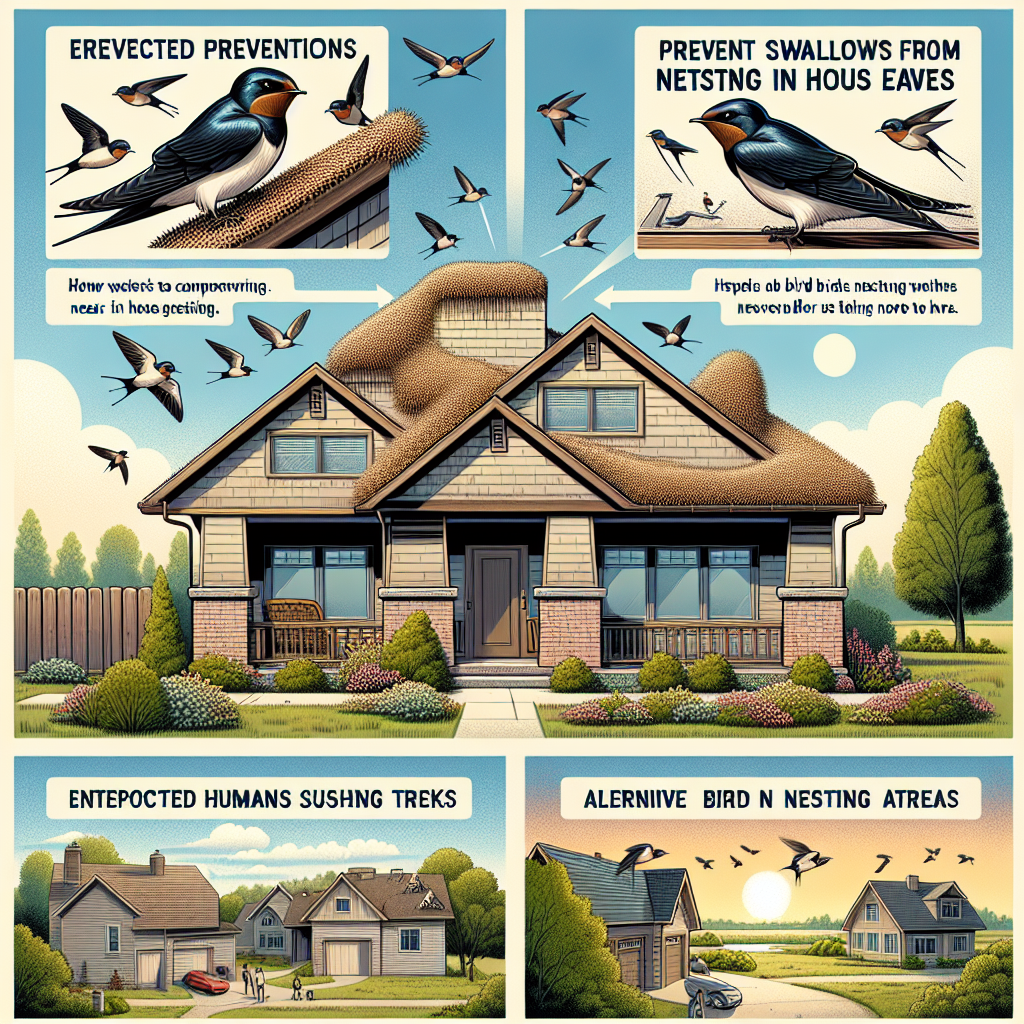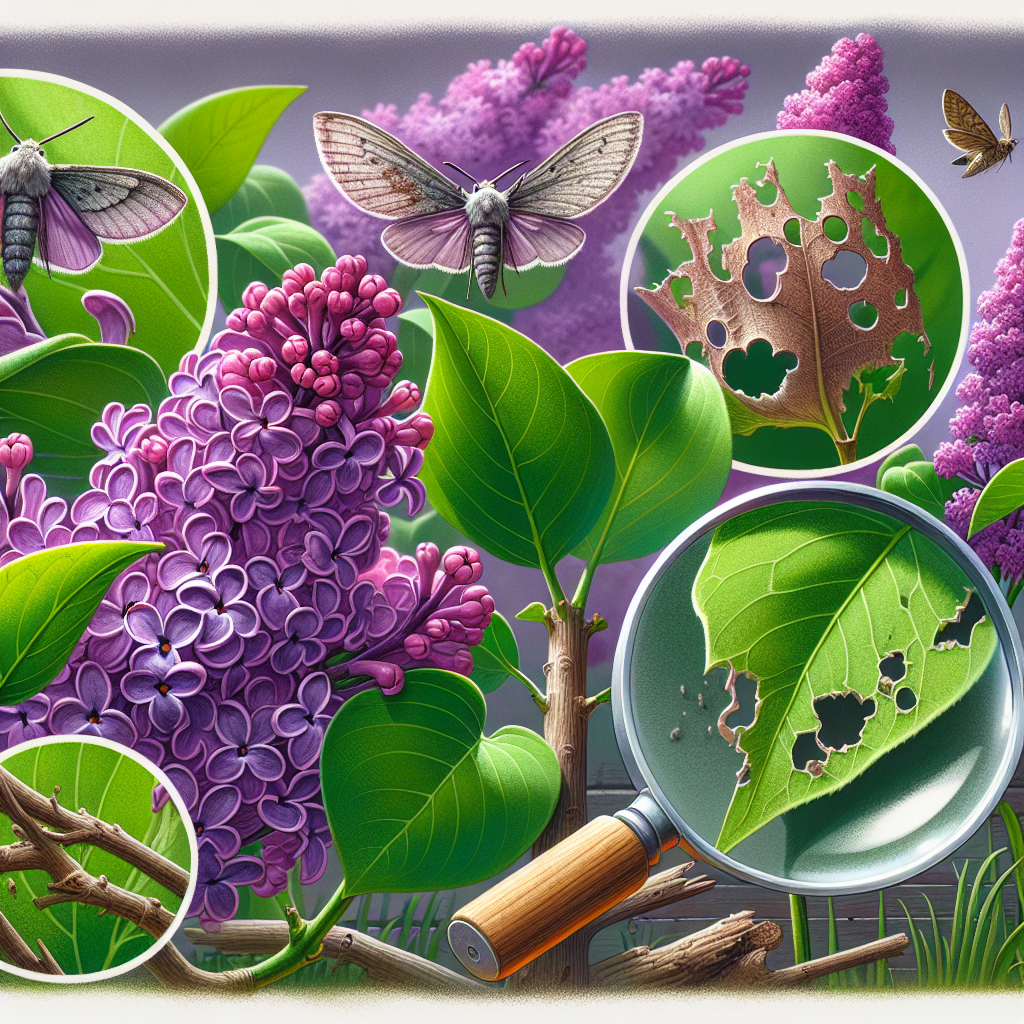Managing Pests in Tangerine Orchards
Updated June 9, 2024 at 2:57 am

Understanding Tangerine Orchard Pests
Managing tangerine orchards involves a myriad of considerations to ensure a healthy and fruitful harvest. Contending with pests tops the list, as these unwanted visitors can cause significant damage to your trees and fruit. Identifying and controlling pests in a timely and effective manner is crucial to the success of your orchard.
Pests in tangerine orchards come in various forms, ranging from insects to rodents, and each poses its own set of challenges. Common culprits include aphids, mites, citrus thrips, and snails, which not only damage the leaves and fruit but also have the potential to spread diseases. Addressing these issues requires a keen eye and strategic management techniques.
Integrated Pest Management Strategies
Integrated Pest Management (IPM) is a holistic approach that involves monitoring, prevention, and the use of environmentally-sensitive control methods. By implementing IPM, you can reduce the reliance on pesticides while promoting natural pest control alternatives that are less harmful to the environment and beneficial organisms within the orchard ecosystem.
IPM does not eliminate pesticide usage entirely but advocates for its judicious and selective application. When chemical treatments are necessary, opting for targeted pesticides that specifically address the pests of concern without impacting non-target species is a key component of an ethical and sustainable pest management program.
When Chemical Solutions Are Needed
Despite our best efforts, there are times when chemical interventions become necessary to manage an uncontrollable pest infestation. In those instances, choosing the right pesticide and applying it correctly can make all the difference. Let’s discuss a well-reviewed product that has proven to be effective and user-friendly.
Neem Oil – A Natural Pesticide
Neem oil is a natural pesticide derived from the neem tree, which has properties that are effective against a range of pests, including those affecting tangerine orchards. It acts as an antifeedant, repellent, and egg-laying deterrent for many insect pests and is considered safe for beneficial insects when used appropriately.
Pros:
- It’s environmentally friendly and biodegradable.
- It can target specific pests without harming beneficial insects like bees.
- It’s versatile and can also treat fungal infections on plants.
Cons:
- Repeated applications may be necessary to maintain effectiveness.
- It can be harmful to aquatic life if runoff occurs.
- It might have a strong smell that some individuals find unpleasant.
Find This and More on Amazon
Non-Chemical Pest Control Techniques
Managing pests doesn’t always mean reaching for a chemical solution. There are several non-chemical methods that can be equally effective, and they represent an important part of an IPM strategy. From introducing natural predators to using barrier methods, these techniques help keep pest populations at bay safely and sustainably.
Covering developing fruit with netting, for instance, is a simple barrier technique that can protect your tangerines from pests without any adverse environmental effects. Other methods, such as setting up traps or fostering habitats for natural predators like ladybugs and lacewings, contribute significantly to pest control in a natural and eco-friendly way.
Monitoring and Identification
Routine monitoring is paramount when it comes to managing pests. It enables you to identify which pests are present and to gauge the level of infestation. This information is critical for deciding if and when intervention might be necessary, and it also helps in tracking the effectiveness of control measures over time.
Technologies like pheromone traps and sticky boards can be incredibly useful for monitoring pest populations. These tools help detect the early stages of infestation, allowing for timely intervention. Regular scouting and the use of such monitoring tools should form a core part of your orchard management routine.
Fostering Biological Control
Encouraging the presence of natural predators in your tangerine orchard is not only environmentally sustainable but also offers a long-term solution for pest management. Introducing or supporting populations of predatory insects, mites, and birds can significantly reduce the need for chemical interventions.
Certain plants can attract these beneficial organisms. For instance, planting flower species that bloom year-round provides a continuous food source for predators and can help maintain a balanced ecosystem within the orchard. This biological approach to pest control encourages a diverse and robust orchard environment.
Soil Health and Pest Management
The health of your tangerine trees is directly influenced by the condition of the soil they’re planted in. Healthy soil encourages robust plant growth, making trees more resilient to pests and diseases. Implementing practices like regular organic composting, proper irrigation, and avoiding soil compaction can lead to healthier trees and fewer pest problems.
Utilizing cover crops is another effective soil management strategy. These crops can suppress weed growth, reduce erosion, improve soil structure, and enhance biodiversity. Some cover crops even have the added benefit of deterring certain pests or attracting their natural enemies, contributing to natural pest management.
Cultural Controls and Sanitation
Practices that alter the environment to make it less hospitable for pests are known as cultural controls. This includes clearing away fallen fruit and pruning diseased branches, which can prevent pests from breeding and spreading. Proper sanitation in and around the orchard is crucial for reducing the presence of pests.
Adequate spacing between trees and effective weed management are also key cultural control methods. They promote good air circulation and exposure to sunlight, which can reduce humidity and create conditions less favorable for pest invasions.
Adapting to Changing Pests and Challenges
Pests can adapt and become resistant to certain control methods over time, so staying informed and being willing to adjust your strategy is essential. Staying up-to-date with the latest research and recommendations from agricultural extension services can provide you with the knowledge you need to tackle new challenges as they arise.
Attending workshops, reading industry publications, and engaging with other growers are all good ways to stay informed. These resources can provide valuable insights into emerging pest issues and introduce you to innovative solutions that other growers have found successful.
Collaborating for Greater Impact
Working together with other tangerine growers in your area can amplify your pest management efforts. By sharing information and resources, you can create a coordinated approach to pest control that benefits everyone. This collaborative effort can lead to more effective area-wide management strategies.
Joining grower associations or community agricultural programs can facilitate this type of collaboration. These groups often have collective resources, such as shared equipment for pest monitoring or control, which can be more cost-effective and efficient than individual efforts.
Managing pests in tangerine orchards can certainly be challenging, but by using an integrated approach that combines various strategies, you can create an effective and sustainable plan. Whether you decide to try natural methods like neem oil, foster beneficial predators, improve your soil health, or engage in proactive monitoring and identification strategies, your efforts will not only lead to a healthier orchard but also a more profitable yield. Remember, being informed, vigilant, and adaptable are key components in the battle against pests, and with the right tools and knowledge, you can keep your tangerine trees thriving.
Pest Identification in Tangerine Orchards
Knowing your enemy is half the battle when it comes to pest management. Different pests can have very different impacts on your tangerine orchard, and recognizing what you’re up against is essential for effective control. Common tangerine pests like the Asian citrus psyllid, for instance, can transmit Huanglongbing, also known as citrus greening disease.
To properly identify pests, look for specific signs of damage. For example, citrus leaf miners leave serpentine trails on leaves, while mealybugs are visible as tiny, cotton-like clusters. Clear identification is critical for selecting the right control measures and preventing the unnecessary use of broad-spectrum pesticides that could harm beneficial organisms in your orchard.
Selecting the Right Pesticides
If you’ve concluded that pesticides are necessary, it’s crucial to select the most appropriate ones for your situation. Always follow label instructions and consider products that have minimal impact on non-target species. For citrus pests, systemic insecticides or oil-based products are often recommended as they preserve beneficial insects while targeting the pest.
One highly-recommended systemic insecticide that growers often turn to is Imidacloprid. Applied according to the directions, it can control various sap-sucking insects effectively. Since misuse can lead to harm to bees and other pollinators, careful timing of applications is needed to avoid flowering periods.
Pros:
- Effective against a wide range of sap-sucking insects.
- Long-lasting protection with a single application.
- Systemic action ensures thorough pest eradication.
Cons:
- Potential risk to pollinators if not used correctly.
- Overuse can lead to pest resistance.
- Highly toxic to aquatic organisms.
Find This and More on Amazon
The Importance of Beneficial Insects
Not all insects are foes to your tangerine orchard; indeed, many are essential allies. Beneficial insects, such as predator mites and parasitoid wasps, can dramatically reduce pest populations. Encouraging these insects can be as simple as refraining from using broad-spectrum insecticides that kill indiscriminately.
Ladybugs are particularly famous for their appetite for aphids, a common pest in tangerine orchards. You might want to consider purchasing ladybugs as a biological control measure, releasing them into your orchard to curb aphid outbreaks. They provide a natural and chemical-free option for pest management.
Physical Traps and Barriers
Physical controls are another cornerstone of pest management. Sticky traps, for example, can capture flying insects like whiteflies and winged aphids. By inspecting these traps regularly, you can monitor pest levels and the effectiveness of your control methods. Another physical control measure is the use of trapping rings or footies placed directly on the fruit to protect against pests like the Caribbean fruit fly.
Barrier methods extend to larger pests as well. Fencing can deter rodents and other larger animals from feasting on your crops. The key with physical controls is to tailor them to the specific pests you are dealing with and to integrate them into a holistic pest management strategy.
Cultural Practices to Suppress Pests
Through cultural practices, you can make the orchard environment less conducive to pests, thus reducing their numbers naturally. Rotating crops and allowing periods of fallow can break pest life cycles. Solarization, the practice of using solar heat to sterilize the soil, is another powerful tactic that can eliminate soil-borne pests and diseases.
Properly timed pruning can also remove habitat for pests and expose them to natural predators. Moreover, inter-planting with companion plants that repel pests or promote beneficial insects can significantly reduce pest pressure while enhancing the biodiversity and resilience of your orchard.
Preventive Measures and Tree Health
Healthy tangerine trees are less susceptible to pests and diseases. Fostering tree health begins with selecting the right variety for your region, providing adequate nutrition, and ensuring that trees aren’t stressed by under or over-watering. A thriving orchard is your first defense against pests.
Preventive measures also include practices such as ant control. Ants often protect honeydew-producing pests like aphids in exchange for their sweet secretions, so managing ant populations can indirectly reduce these pest populations. Baits and barriers can effectively keep ants away from your trees.
Government Regulations and Compliance
Before implementing any pest management strategy, be aware of the local regulations and compliance requirements. Government agencies set guidelines on pesticide use, import and release of biological control agents, and quarantine measures to prevent the spread of invasive pests.
Consulting with your local agricultural extension office can ensure that you’re up to date with the regulatory landscape and can help you make informed decisions. These institutions are an invaluable resource for best practices, up-to-date research, and support tools that consider public health and environmental safety.
Record-Keeping and Analysis
Tracking your management activities and their outcomes is vital for understanding what works in your orchard. Keeping detailed records can help you refine your pest management strategy and make more informed decisions in the future. This can also be a requirement for certain certifications and quality assurance protocols.
Software and apps designed for agricultural record-keeping can simplify this process. Digital platforms allow for easy tracking of applications, monitoring data, and pest outbreaks, which can be analyzed over time to identify trends and improve your IPM strategy.
Conclusion: A Comprehensive Pest Management Plan
By integrating a variety of pest management strategies, you can achieve a balanced and sustainable approach to protecting your tangerine orchard. Remember that monitoring and adaptability are crucial, as is the commitment to continued learning and improvement. With these practices in place, you can foster a thriving orchard that produces bountiful and high-quality tangerine crops year after year.
.
Implementing Technology in Pest Detection and Management
Technological advancements have introduced innovative solutions to age-old pest management problems. Utilizing technology in your orchard can provide you with real-time data, which helps you to make informed decisions quickly. This can include satellite imagery to monitor tree health, automated traps that send alerts when pests are captured, or drones for precise application of biocontrol agents.
Digital data management allows for meticulous tracking of all interventions. Apps can help you map out the orchard, noting which areas are affected by pests, which treatments were applied, and the resulting outcomes. This effort enables precise targeting and reduced pesticide use, as well as a clear historical overview of your orchard’s health.
Seasonal Considerations and Weather Patterns
Understanding how seasons and weather patterns affect pest populations is key to managing them effectively. Certain pests may be more active during specific times of the year, or population booms may coincide with weather events like heavy rains or drought. By staying attuned to these patterns, you can anticipate pest surges and take preemptive action.
Being prepared for these fluctuations means adjusting your management tactics seasonally. Depending on your region, you might need to increase monitoring during the warmer months when pests are most active or apply protective measures before the wet season to guard against fungus-loving pests. Knowledge of your local climate and pest life cycles will put you one step ahead in orchard management.
Utilizing Natural Pesticides and Biopesticides
In an effort to minimize the environmental footprint and health concerns associated with synthetic pesticides, natural pesticides and biopesticides are gaining popularity. These products, derived from natural sources like plants, bacteria, and minerals, are often targeted and degrade more quickly in the environment.
For example, spinosad is a biopesticide produced by a soil bacterium that has been found to control a wide range of pests, including thrips and caterpillars. It’s certified for organic farming and has a low toxicity to non-target animals. However, it should be included in a rotating program to prevent pest resistance.
Pros:
- Friendly to beneficial insects and pollinators when used responsibly.
- Suitable for organic farming and environmentally conscious pest management.
- Less likely to contribute to resistance when rotated with other control methods.
Cons:
- May require higher doses or more frequent applications than synthetic pesticides.
- Can be less shelf-stable, losing effectiveness over time.
- Still requires careful application to avoid harm to non-target species.
Find This and More on Amazon
Enhancing Orchard Infrastructure to Support Pest Management
The physical structure of your tangerine orchard can greatly influence its susceptibility to pests. Investing in infrastructure, such as proper irrigation systems and even windbreaks, can play a substantial role in pest management. These might require upfront costs, but they are investments that can pay off by creating less favorable conditions for pests and diseases.
For example, drip irrigation reduces water waste and prevents the leaf wetness that many pests and diseases favor. Windbreaks can prevent the spread of pests and dust that might carry pathogens. Carefully planning the layout and infrastructural elements of the orchard ensures environmental conditions are optimized for tree health and reduced pest pressures.
The Role of Community Awareness and Education
Lastly, a knowledgeable and vigilant community is a formidable line of defense against pests. Orchards are part of larger ecosystems, and pests do not respect property boundaries. By raising awareness and educating neighboring growers and the community at large, there’s a better chance to collectively combat and control pest populations effectively.
Outreach programs, community seminars, and networking with local institutions can encourage better pest management practices on a larger scale. These efforts can help to prevent large-scale infestations, which could otherwise reverse the individual efforts of meticulous tangerine orchard managers.
By adopting an arsenal of varied pest management techniques, being proactive, and engaging with the larger community, you can successfully manage pests in your tangerine orchard. Each strategy plays an important role in a multi-faceted approach, ensuring that your tangerines continue to flourish for seasons to come.
Shop more on Amazon

